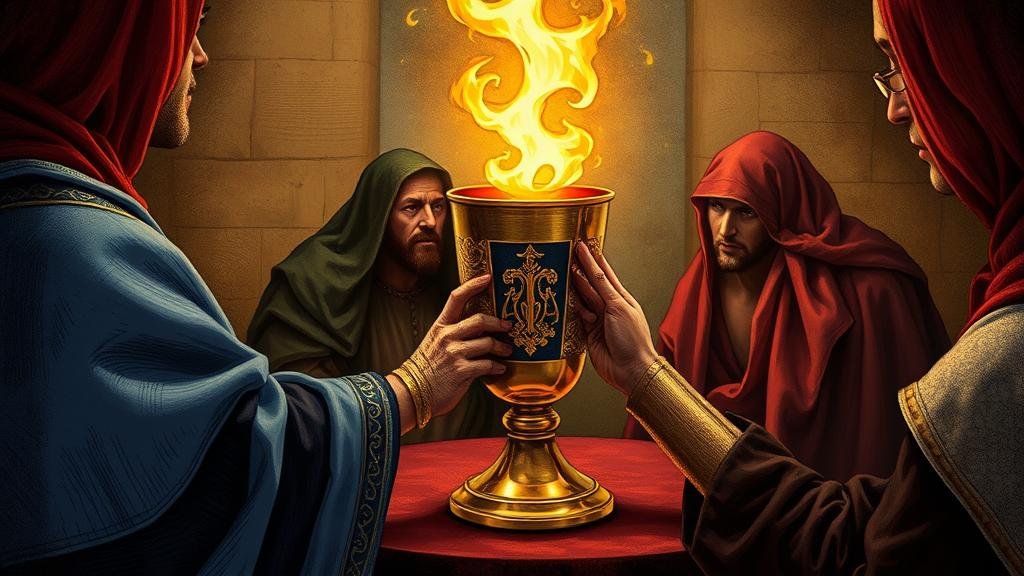Exploring the legends surrounding the Holy Grail and its historical basis.
Exploring the Legends Surrounding the Holy Grail and Its Historical Basis
The Holy Grail has captivated imaginations for centuries, often depicted as a sacred vessel imbued with supernatural properties. From medieval literature to modern pop culture, the Grails legends intertwine themes of desire, purity, and divine connection. This article delves into the origins of these legends, their historical contexts, and their enduring impact on culture.
The Origins of the Holy Grail Legend
The term Holy Grail can be traced back to the medieval literary works of the 12th century, particularly the writings of Chrétien de Troyes. In his poem Perceval, the Story of the Grail, written around 1180, he introduces a mystical object that bestows miraculous gifts, signifying a quest for purity and enlightenment. While de Troyes explicit reference to a Grail is often linked to early Christian artifacts, its implications extend into a broader mythological framework.
Historical Artifacts and Theories
Though widely regarded as a myth, there have been numerous claims surrounding the historical existence of objects that could be linked to the Grail. Some of the primary contenders include:
- The Holy Chalice of Valencia: Believed to be the cup used by Jesus Christ during the Last Supper, this artifact has been housed in the Valencia Cathedral, Spain, since its arrival in the 15th century.
- The Nanteos Cup: A wooden cup claimed to have healing powers, this artifact from Wales dates back to the medieval period and is associated with various legends that echo those of the Grail.
- The Sangreal: An ancient text describes the Sangreal, often interpreted as a reference to a royal bloodline. This concept intertwines the Grail with themes of kingship and divine right.
Symbolism and Cultural Impact
The Holy Grail has transcended its origins, finding a place in various cultural narratives. Its symbolism can vary widely, influencing literature, art, and film. For example:
- Literature: Works such as Le Morte dArthur by Sir Thomas Malory in the 15th century and T.S. Eliots The Waste Land explore the Grail as a symbol of spiritual fulfillment and the quest for meaning.
- Film: Movies like Indiana Jones and the Last Crusade showcase the Grail as an object of adventure and exploration, emphasizing its treasure-like qualities.
- Art: Artists throughout history, including Sir Edward Burne-Jones and Salvador DalÃ, have portrayed the Grail in varying contexts, often emphasizing its mystical and transformative properties.
Analytical Perspective
The allure of the Holy Grail can be attributed to its representation of humanity’s innate quest for the divine. It serves as a metaphor for various existential struggles, such as:
- Striving for purity in a complicated world
- The desire for immortality and eternal wisdom
- The pursuit of personal and collective redemption
Plus, the Grail reflects both an individual journey and a broader cultural aspiration: the longing for something greater than oneself. Much like Dantes Divine Comedy or the journeys of other iconic heroes in mythology, the quest for the Holy Grail symbolizes a passage towards enlightenment and understanding.
Conclusion: Actionable Takeaways
As we consider the legends surrounding the Holy Grail, its essential to acknowledge their complex interplay between myth and history. While the tangible existence of the Grail may remain elusive, its impact on cultural narratives is abundant. Those interested in exploring this further can:
- Visit historical sites such as the Valencia Cathedral or local museums displaying relics associated with the Grail.
- Read classic texts and modern interpretations to understand the evolution of the Grail mythology.
- Engage in discussions or forums related to the Grail and its broader implications in literature and philosophy.
Ultimately, the Holy Grail transcends mere legend, inviting individuals to explore their own journeys towards understanding, purpose, and spirituality.



